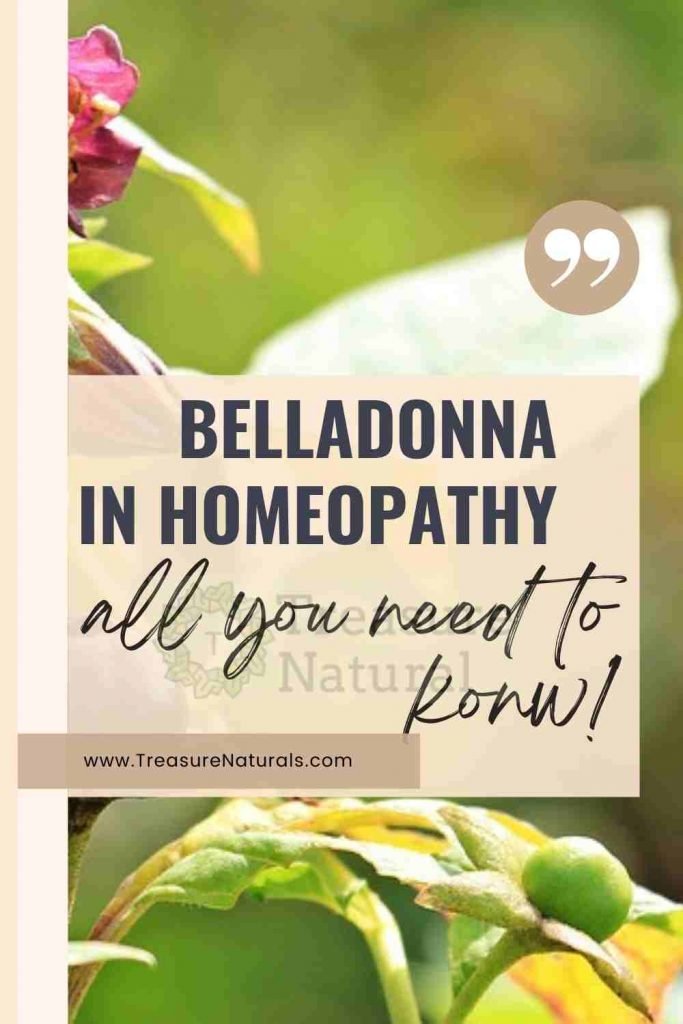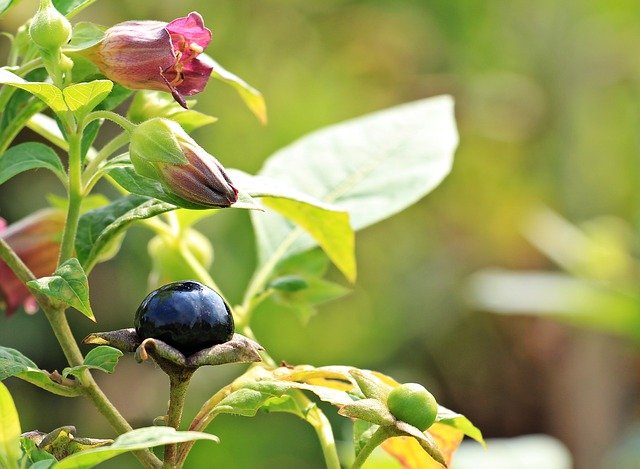
Belladonna is a homeopathic remedy obtained from the homonymous plant, useful against colds, sore throats and exanthematous diseases of children. Let’s find out better.
Belladonna, whose scientific name is Atropa belladonna, (Atropa was also a Greek goddess who had the power to sever the thread of life) is a perennial herbaceous plant belonging to the Solanaceae family. The homeopathic remedy Belladonna is obtained from the dilutions, interspersed with dynamizations, of the mother tincture of the whole Atropa belladonna plant when it begins to bloom.
The plant grows in the mountainous areas of central Europe, northern Africa and western Asia. The whole plant is poisonous and in particular its berries, despite having a sweet and pleasant taste: ingesting only some of them can cause death.
The plant contains three alkaloids, which are its active ingredients, namely: atropine, hyoscyamine and scopolamine. Atropine acts on the parasympathetic nervous system and carries out sedative and anesthetic activities, but it is very dangerous as this is the deadly substance. Even today it is used in the field of ophthalmology to dilate the pupils in order to observe the fundus.
Hyoscyamine is a central nervous system stimulant. Scopolamine is a central nervous system depressant. Both have antispasmodic abilities. At the appropriate doses, the parts of the plant (leaves, roots, seeds) can be used in the treatment of various diseases, such as asthma, neuralgia, headache , rheumatic and muscle pain, gastrointestinal and biliary spasms and colic.
When using Belladonna
Belladonna is the remedy is suitable for all problems in which there is a strong stimulation of the nervous system. Hot, redness, and burning are the three most common big symptoms.
These are diseases with localized or generalized congestion whose symptoms appear in an acute, sudden and violent way, accompanied by redness, a sensation of heat, burning and throbbing pain, hyperexcitability of all senses, often fever sometimes accompanied by delirium and hallucination.
Symptoms worsen by touch, movement, noise, light, air currents, lying down, at night, exposing the body, hair cutting, bumps and jolts, as they improve with rest, standing upright, in a warm room.
One of the most common uses is for diseases of the respiratory system; it is also the remedy for children’s exanthematous diseases, with rashes that spread rapidly.
Belladonna is generally used for:
- respiratory system, for those who tend to get cold easily, especially after cutting their hair or after leaving their heads uncovered. Cold, cough, flu or fever and ailments affecting the throat : if it is dry, red, difficult to swallow
- ears, in case of otitis, pain, mumps
- eye conjunctivitis, pupillary dilation
- exanthematous diseases, such as scarlet fever, measles, rubella
- genital disorders, early or late menstruation, dry female parts (v), hot flashes, swollen, inflamed or hard breasts
- nervous system, convulsions, epilepsy, neuralgia, hallucinations, insomnia, depression, headache
- skin problems, eczema, acne, erythema, chilblains
- problems with the gastro-intestinal system, colitis, colic, constipation
- widespread joint pain, tooth pain, swollen and red gums
Dosage and administration
In all cases 4CH dilution, 3 granules or 5 drops from 3 to 6 times a day as needed.
Who is Belladonna recommended to?

The Belladonna type is extremely susceptible, is a pleasant person, a companion when he is well; but when he falls ill he becomes violent and often delirious. Most of the time these are women and children with light hair and blue eyes, fair complexion, delicate skin, nervous with a tendency to convulsions.
Belladonna is particularly suitable for those who are very sensitive to the cold, who cannot bear to uncover themselves. Furthermore, the remedy has no depth of action, that is, it does not penetrate deeply enough into the organism and its action lasts a few days.






